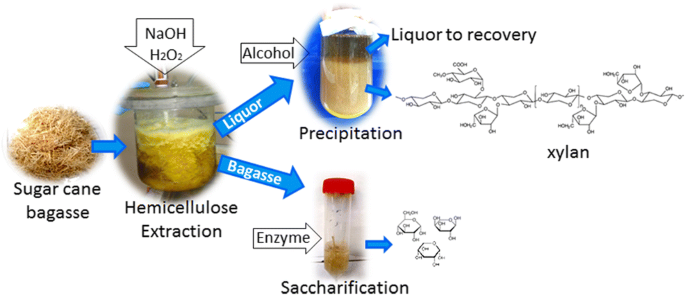Best Cane Sugar Processing Chemicals: Relied On by Sector Specialists
Best Cane Sugar Processing Chemicals: Relied On by Sector Specialists
Blog Article
Maximizar Rendimientos Y Minimizar Costos: Estrategias Avanzadas Para La Optimización Química Del Procesamiento De Azúcar De Caña
In the realm of walking cane sugar processing, the quest of taking full advantage of returns while concurrently minimizing expenses stands as an awesome challenge that needs a strategic blend of innovative chemical optimization strategies. The complexities of this venture look into the core of efficiency, where every element of the procedure plays an essential function in attaining optimum outcomes. By exploring the ins and outs of chemical evaluation, enzyme utilization, pH control, purification, and distillation methods, a landscape rich with chances for improvement and technology arises. Amidst this elaborate internet of techniques lies the pledge of opening untapped possibility and revolutionizing the very essence of sugar production. Cane Sugar Processing Chemicals.
Chemical Analysis for Effectiveness
Chemical analysis plays a critical role in enhancing the performance of sugar walking cane processing by providing essential insights into the composition and residential properties of the raw products. By conducting detailed chemical evaluations on sugar walking stick samples, processors can establish the precise focus of sucrose, glucose, fructose, and other parts present in the raw material. This details is crucial for optimizing the numerous stages of the sugar walking cane processing chain, from milling to formation.
Additionally, chemical analysis makes it possible for processors to recognize pollutants such as natural acids, healthy proteins, and minerals that can affect the quality and return of the final sugar item. By quantifying these pollutants, processors can carry out targeted techniques to get rid of or minimize their impacts, ultimately improving the total efficiency of the handling plant.
Additionally, chemical evaluation facilitates the tracking of process parameters such as pH, temperature level, and thickness, permitting processors to make real-time adjustments to ensure optimal conditions for sugar extraction and crystallization. Overall, a comprehensive understanding of the chemical make-up of sugar walking stick is necessary for taking full advantage of yields, lessening expenses, and preserving high product high quality in the sugar manufacturing market.

Enzyme Usage for Raised Returns
With a calculated method to enzyme usage, sugar walking stick processors can substantially improve their returns while maintaining functional performance in the production process. Enzymes play a vital role in sugar walking stick processing by damaging down complex carbs right into simpler sugars, therefore raising the general sugar removal performance. By incorporating certain enzymes customized to target the various components of sugar walking stick, such as cellulose and hemicellulose, cpus can boost the release of sugars throughout removal.
Enzyme utilization uses the benefit of making the most of sugar returns from the raw product while decreasing the More Info power and resources required for handling. This causes an extra lasting and cost-effective production process. Furthermore, enzymes can help in minimizing handling time and boosting the general top quality of the sugar item. Via mindful option and application of enzymes, sugar cane cpus can maximize their procedures to attain greater yields and productivity.
Ph Control for Ideal Processing
Enzyme utilization for increased returns in sugar walking cane handling lays the foundation for addressing the vital element of pH control for optimal handling performance. Preserving the suitable pH level throughout numerous stages of sugar cane handling is essential for maximizing returns and lessening expenses. pH control is particularly critical during the extraction and explanation processes. In the removal phase, maintaining the correct pH assists in achieving effective sucrose extraction from the cane. Regulating the pH during explanation help in the precipitation of contaminations and non-sucrose elements, leading to a purer last product. PH affects the activity of enzymes included in the breakdown of macromolecules, affecting the overall effectiveness of the procedure. By thoroughly monitoring and changing the pH levels at various handling steps, sugar walking stick cpus can enhance sugar recuperation prices, decrease chemical use, and optimize the general manufacturing process. Efficient pH control not just improves the high quality of the last product however likewise adds to sustainable and cost-effective sugar walking cane handling procedures.
Advanced Filtration Techniques
Executing sophisticated Read Full Report filtering methods in sugar walking stick processing improves the effectiveness and purity of the end product via improved splitting up approaches. By including sophisticated purification modern technologies, such as membrane layer filtering and triggered carbon filtration, sugar cane handling plants can accomplish higher levels of sugar recuperation and boosted quality assurance.

Activated carbon filtration is another innovative method that helps in the removal of colorants, off-flavors, and recurring pollutants from sugar walking stick products. By utilizing turned on carbon's adsorption properties, this purification technique enhances the clarity and preference of the sugar, satisfying the high standards required by consumers and industry regulations.
Energy-Efficient Purification Techniques
Energy-efficient purification techniques are essential for enhancing the sugar cane handling sector's energy intake while preserving high-quality item standards. Standard purification processes can be energy-intensive, bring about higher production prices and environmental effects (Cane Sugar Processing Chemicals). Implementing energy-efficient distillation approaches, such as vacuum distillation or molecular purification, can significantly minimize power look at this site requirements while enhancing total procedure efficiency
Vacuum cleaner distillation involves decreasing the pressure within the purification system, which lowers the boiling point of the fluid combination being processed. This reduction in boiling factor reduces the energy needed for evaporation, causing energy cost savings contrasted to traditional purification methods.
On the other hand, molecular distillation makes use of brief path purification strategies under high vacuum conditions to separate substances based on their molecular weight. This method is particularly reliable for heat-sensitive compounds, as it runs at lower temperatures, lowering energy consumption and preserving item top quality.
Verdict

Report this page